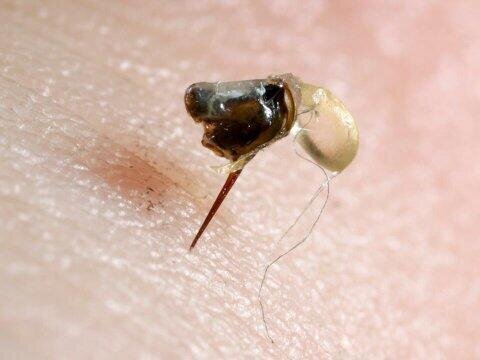Bee Stings: The Unavoidable Reality of Beekeeping and How to Handle Them
Let’s face it—bee stings suck. There, I said it. While they’re certainly not the most enjoyable part of beekeeping, they do come with the territory. As a beekeeper, you’re literally disturbing the peace when you rip the hive’s roof off and start pulling up frames of brood and honey, so it makes sense that the bees might get a little agitated. But here’s the thing: by paying attention to the bees, you can actually learn to read their behavior and avoid getting stung—at least most of the time. Before we dive into those telltale signs, let’s talk about the stinger itself, what bee venom does to your body, and the different types of reactions you can have.
All stinging insects, including bees and wasps, belong to the order Hymenoptera. The more aggressive species, like hornets and yellowjackets, tend to sting more readily than bumble bees or honey bees, which are less defensive. Since the venom of these insects varies, so does the way your body might react to a sting.
The stinger is a modified ovipositor (an egg-laying organ) that only female bees have. Worker bees, which are sterile females, use their sting as a defense mechanism to protect themselves and the hive. The honey bee’s stinger is equipped with a poison sac, glands, and barbed lancets designed to stick in the victim’s skin. Once a bee stings, she flies away, leaving the stinger—and her venom sac—behind. The venom continues to pump into the sting site for about a minute, and at the same time, alarm chemicals are released, attracting other bees to sting the same area. Unfortunately for the bee, she dies soon after stinging.
Interestingly, queen bees have stingers too, but they rarely use them on anything other than rival queens. Their stingers, like those of hornets and yellowjackets, have smooth or minimally barbed lancets, which allow them to sting repeatedly without dying.
Honey bee stinger
Bee venom contains enzymes and peptides, such as hyaluronidase and melittin, which cause pain and trigger your immune system to respond. After a sting, it’s important to remove the stinger as quickly as possible by scraping it off with your fingernail. This will help minimize the amount of venom entering your skin. Scraping is better than pinching, as pinching could force more venom into the wound.
Normal / Local Reaction:
When you get stung, your body responds by releasing antibodies to protect against the venom. This triggers the release of histamine, which leads to common symptoms like inflammation, swelling, itching, and redness around the sting site. You’ll usually notice a raised white bump with a red center (called a wheal) within a few minutes. The itchiness can last anywhere from a couple of days to a week.
For normal reactions, there’s not much you can do except manage the itching and discomfort. Some popular home remedies include applying vinegar, raw onions, honey, baking soda, or an ice pack to the sting site.
Allergic Reaction:
In rare cases, people can experience an allergic reaction to bee stings, which falls into two categories: systemic allergic reactions and large local reactions. Systemic allergic reactions are the most severe and can cause symptoms like difficulty breathing, dizziness, a rapid drop in blood pressure, and even unconsciousness. These reactions are rare, affecting less than 1% of the population.
Large local reactions, while less life-threatening, can still be dangerous if the swelling occurs in the throat or airways. If someone experiences an allergic reaction, call 911 immediately and administer an antihistamine or epinephrine (EpiPen) if available.
Cole getting stung on the forehead (and taking it like a champ!). Can you spot the Queen on the frame?
Bees have their own way of communicating, especially to let us know that they’re feeling threatened, and if we know what to look for we can understand there cues.
If you’re near a beehive and you notice that a few of bees are persistently investigating you it means that they’ve sent guard bees to assess your threat level. Most often they’re just checking you out but if you’re not wearing the right protective clothing or if you’re feeling nervous, it’s a great opportunity to step back.
You can hear a subtle but audible change in the tone of a colony that is feeling threatened. The sound shifts from pleasant humming to hard buzzing.
If you’re inspecting a colony sometimes you’ll notice that the bees will point their abdomen at you. This releases an alarm pheromone to signal guard bees to check you out. If you look close, you can even see that the stinger is extended from its abdomen and it’s pointed at you. It’s the ultimate warning sign.
While bee stings are inevitable for most beekeepers, there are ways to minimize your chances of getting stung:
Inspect on a Good Day: Choose a sunny day for hive inspections, when the bees are busy foraging and fewer are in the hive. Avoid opening the hive on cold, wet, or windy days, as this can make the bees cranky and defensive.
Move Gently: Handle the hive with care and confidence. Avoid knocking the hive, smashing combs, or squashing bees, as these actions can release alarm pheromones.
Use a Smoker: If you notice the bees becoming agitated, use your smoker. Smoke helps to mask alarm pheromones and can calm the bees down.
Wear Protective Gear: Whether you’re comfortable in just a veil or prefer a full bee suit, wear whatever makes you feel confident while working with your bees. Light-colored clothing is also a good idea since bees are more likely to perceive dark colors as a threat.
Know When to Call it a Day: If your bees are showing signs of aggression, it’s best to close up the hive and try again another day. It’s not worth causing a hazard for yourself or your neighbors.


